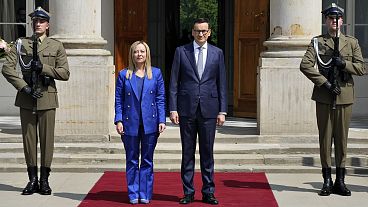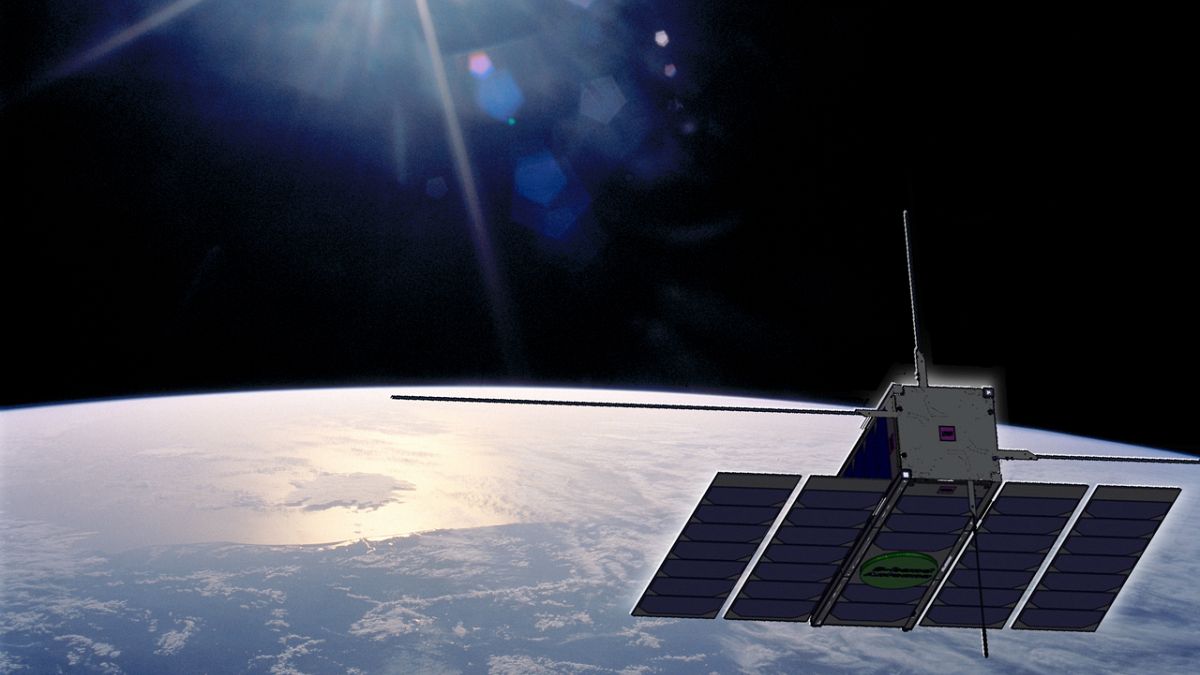The European Space Agency (ESA) is studying how to build a spoof-proof mega-constellation of satellites to deliver "4K video in your pocket" broadband.
The European Space Agency (ESA) is studying how to build a spoof-proof mega-constellation of satellites in space.
Until recently, satellites sent radiocommunication signals from their positioning in the atmosphere down to receivers on the ground that would then distribute that information to cellphone carriers, air traffic control hubs, and elsewhere.
ESA's proposed HydRON project will create a network of satellites linked together in space that transmit laser signals between themselves and a few optical networks on the ground, in what they call a "world first" for fibre in the sky.
This project, they say, will deliver Internet speeds of roughly one terabyte per second.
"HydRON aims to demonstrate the world’s first all-optical multi-orbit network… in other words ‘Internet beyond clouds,'" according to ESA.
The HydRON project was first announced in 2019 but is now reaching the end of its design phase.
Thales Alenia Space, a joint French-Italian space manufacturer, will be taking the lead on manufacturing the low-orbit satellites for the project.
How does HydRON work?
The project has two parts, the scientific research to build this type of project and an “early bird demonstration” that will test their first network.
The HydRON project will work with satellites in low orbit, at a maximum altitude of 1,000 km above the earth and geospatial satellites, the highest of all at around 36,000 km.
The project will mix core nodes on these types of satellites so that they work together with minimal reliance on ground systems, according to Xavier Lansel, managing consultant at Euroconsult.
ESA says they’re not sure how many satellites they will be using in their demonstration yet.
Daniele Lo Forti, Thales’ design authority of optical communications projects, said his company is involved with creating the satellites as well as the on-board routing that will direct and reroute traffic between satellites instead of the ground.
They are also working on technology that will use light as a way to carry terabytes of data on one single laser beam.
This technology, according to Lo Forti, will make it easier for providers that eventually use this mega-constellation network to provide people with more data.
"We are in the era and age of communication where there is a lot of data being collected on board the satellites… and there are users that need more and more data," Lo Forti said.
The use of laser connection between satellites will make it harder for the HydRON system to be intercepted, either by bad weather or cyber criminals looking to "spoof" radiofrequency signals, Lo Forti continued.
In January, the European Union Aviation Safety Agency (EASA) said there’s been a "sharp rise in attacks" on satellite navigation systems, where signals are either blocked or send false information to the receiver on a plane.
Recent media coverage has attributed some of these incidents to the Russians.
'4K video in every pocket'
Moving the data away from radio frequencies also addresses a "bottleneck" of data being processed by a "data-hungry world," according to a statement from ESA.
A webpage for the HydRON project says that it could bring internet to "ground users located in remote areas with no available broadband access".
Lo Forti said their eventual goal is to bring "4k video to every pocket".
A spokesperson from the ESA said the HydRON project builds on what Europe's been doing in the field of optical telecommunications for several decades by finally "transforming point-to-point connections to a multi-orbit network system".
Hermann Ludwig Moeller, director of the European Space Policy Institute, said the ESA will likely have public sector clients first, like the EU Operational Space Programme or security and defence companies.
But, with the competition from related systems from the US Space Development Agency (SDA) and SpaceX, the exploration company run by billionaire Elon Musk, Moeller expects providers will use the ESA’s new network.
"If you get to that terabyte range, you will automatically create a market," he said.
A phased launch by 2027
ESA says this project will put Europe “at the forefront” of the world’s optical telecommunications industry, a new but complicated market that’s booming in a new age space race, according to Lansel.
“Everybody is discovering its potential at the same time,” Lansel said.
SpaceX already has their own network of Starlink satellites in low-Earth orbit that use the technology proposed in ESA’s project to pass data between one another at the speed of light, according to a description of the system on the website.
In March, the company said they were going to start selling this technology to other providers.
In a statement to Euronews Next, ESA said SpaceX’s recent expansion into the optical network "underlines the strategic importance of this technology".
Their system aims for "much higher dimensions," than those offered by SpaceX with the amount of data transferred through the network at once or the distances between satellites in their constellation system.
Because SpaceX in particular is building a private network, Lansel believes the company will get it up and running before the European Space Agency, whose current timeline is for a phased launch of their demonstration system that will start in 2027 and end in 2029.















